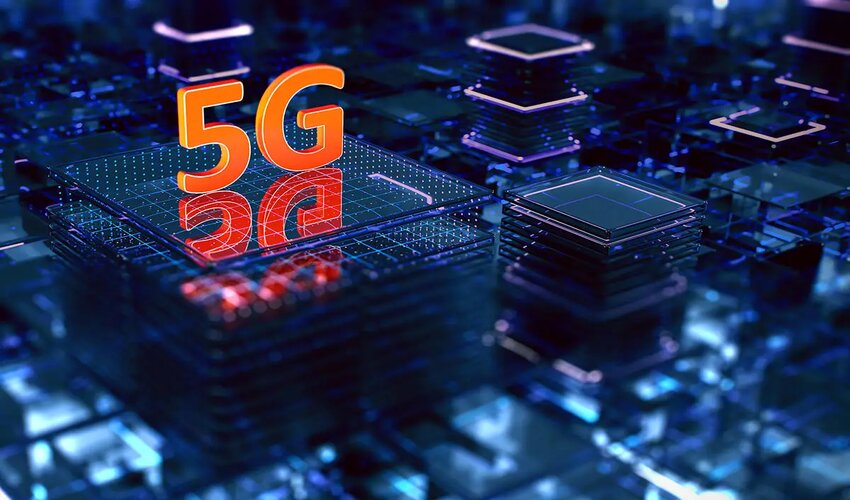
5G isn’t merely an upgrade from 4G; it’s a technological leap that alters the landscape of connectivity. Imagine 5G as a highway with more lanes – a superhighway allowing a colossal amount of data to flow seamlessly.
This is due to its operation on higher frequencies, which enable quicker data transfer. The key to its speed lies in its ability to handle a substantial number of devices simultaneously without compromising performance.
It’s like a bustling city intersection efficiently managing a myriad of vehicles, ensuring smooth flow and reduced congestion.
Speed and Capacity
5G is set to revolutionize the way we interact with technology. The potential for speed is phenomenal, promising up to 100 times faster speeds than its predecessor. This means downloading a high-definition movie in seconds rather than minutes.
Latency Reduction
One of the remarkable features of 5G is its significantly reduced latency. Latency is the time it takes for data to travel from one point to another. With 5G, it’s like shrinking the geographical distance between two points virtually, making real-time interactions, like gaming or video calls, incredibly smooth and instantaneous.
Massive IoT Support
Internet of Things (IoT) devices are becoming increasingly prevalent in our lives. 5G can efficiently handle a vast number of these IoT devices, from smart home gadgets to industrial sensors, without straining the network.
Beamforming Technology
Beamforming is akin to a spotlight focusing directly on your device, directing the signal specifically to where it’s needed, ensuring a stronger and more reliable connection. It’s like having a personal delivery service ensuring your data arrives promptly and efficiently.
Infrastructure Adaptation
5G infrastructure isn’t just about towers. It involves an intricate web of small cells, antennas, and fiber optics spread throughout the urban landscape, making it a complex yet fascinating engineering feat.
Challenges in Urban Deployment
The unique challenges of urban deployment are multifaceted. The dense cityscape with its tall buildings and diverse structures presents hurdles for network propagation. Not to mention the regulatory obstacles, which can sometimes slow down the deployment process. The need for a dense network of small cells and overcoming infrastructure limitations while maintaining a balance with urban aesthetics is a puzzle being diligently solved.
FAQs
1. How does 5G differ from 4G, and what makes it suitable for urban areas?
5G operates on higher frequencies, enabling faster data transfer. Its ability to handle more devices simultaneously makes it perfect for densely populated urban areas.
2. What are the main challenges in deploying 5G networks in cities?
Challenges include the need for a dense network of small cells, overcoming infrastructure limitations, and navigating regulatory requirements.
3. How do small cells contribute to 5G in urban areas?
Small cells act as mini base stations, amplifying connectivity in densely populated regions where larger towers may not be feasible.
4. How can the community participate in optimizing 5G coverage?
Community involvement is crucial for successful deployment. Engaging with local authorities, providing feedback, and supporting infrastructure development are ways the public can contribute.
5. What environmental considerations are essential in 5G deployment?
Reducing energy consumption, minimizing the physical footprint of infrastructure, and adhering to sustainable practices are key environmental considerations in 5G implementation.
Conclusion:
In the journey to optimize 5G networks in urban areas, it’s clear that this isn’t merely about faster internet; it’s a societal metamorphosis. The complexities, from infrastructure overhaul to community engagement, mark the convergence of technology and society.
The promise isn’t solely in speed but in the transformation of our cities, healthcare, and daily interactions. As we stand on the cusp of this connectivity revolution, balancing innovation with sustainability becomes paramount.
Embracing 5G means not just faster connections but a deeper intertwining of our world. It’s a future where boundaries blur, connectivity expands, and innovation unveils limitless potential.
Author bio:
Haider is a seasoned SEO expert with over five years of hands-on experience in optimizing online content for enhanced visibility and engagement. With a diverse portfolio of successful blogs, including the widely acclaimed ‘MakesPulse,’ Jane has honed her skills in driving traffic and improving search rankings. Her in-depth knowledge of SEO strategies and a proven track record in blog management make her a go-to resource in the ever-evolving digital landscape.

Aimee Garcia is a Marketing Consultant and Technical Writer at DailyTechTime. She has 5+ years of experience in Digital Marketing. She has worked with different IT companies.

